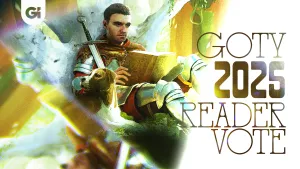Gear up for the holidays with Game Informer. Subscribe today to receive our latest issue!
Where Did All The JRPGs Go?
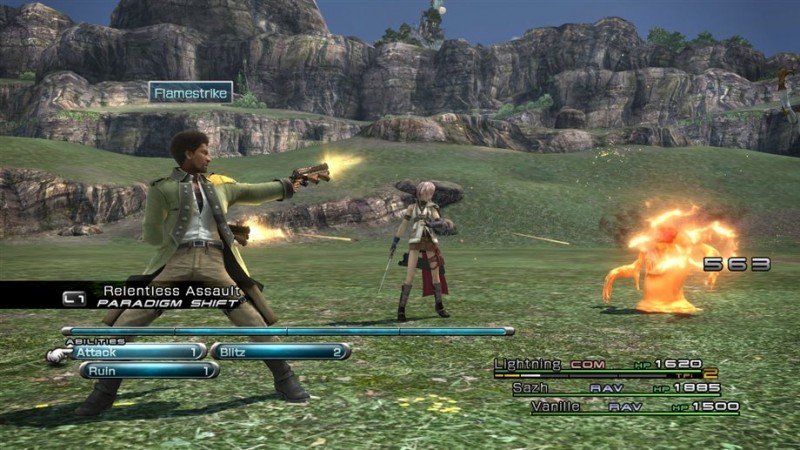
As a longtime fan of JRPGs, I often find myself wondering what ever happened to all of the Japan-developed RPGs that I grew up playing on the SNES and PlayStation. Triple-A million-dollar-budget behemoths like Final Fantasy XIII (pictured above) are very much the exception these days. Obviously much of the genre has moved to handhelds, but will we be seeing any of these series return in current-gen console games? I decided to look back on some of my favorite JRPG franchises and explore what happened with each series and whether or not there’s any hope of them making a comeback.
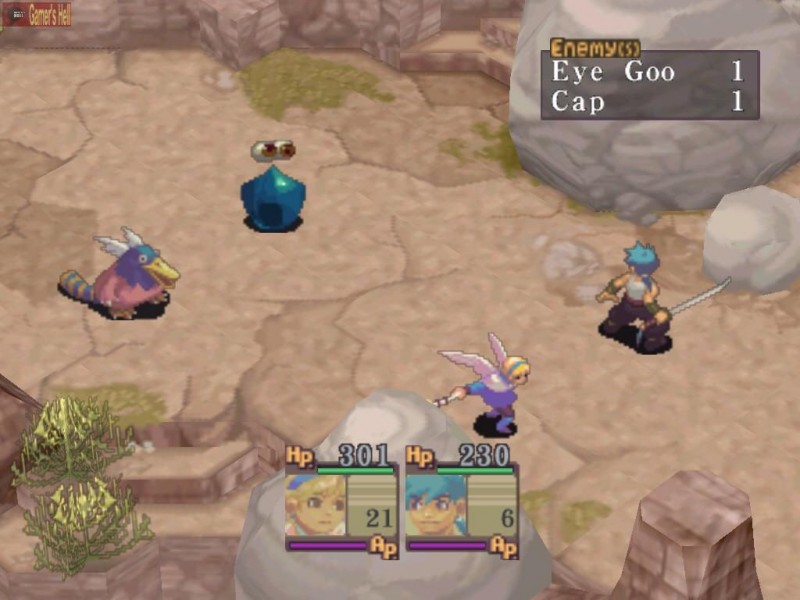
Breath of Fire
What was it? Beginning on the SNES in 1993, the Breath of Fire series became Capcom’s primary RPG franchise (possibly helped along by the fact that Square Enix published the first game in North America). It became known for sharing certain elements between each game, such as shapeshifting lead characters named Ryu and Nina, false religions, and, well, fishing.
How did it do? The first two Breath of Fire games were well received, even with the sequel coming late in the SNES’s lifespan. Despite being criticized for a fairly generic story, most reviewers appreciated the giant open world and epic adventure boasted by both titles.
Things started going downhill with Breath of Fire III; despite making the leap to PlayStation and featuring improved graphics, the series’ slow pace and traditional story was not improved upon. Breath of Fire IV fared a bit better with critics but was censored in its English release, with several scenes cut and some of the more serious plot elements, such as one character’s alcoholism, removed.
Finally, Breath of Fire: Dragon Quarter arrived on the PS2 in 2003 and took the franchise for a loop. Breaking away from retelling an extremely similar tale as previous BoF games had done, Dragon Quarter was set in an underground bunker and introduced a unique new system where players had to restart the game numerous times (carrying over their skills and items) if they wanted to see everything and make it to the end. Capcom would employ a similar system in the Dead Rising games. Though many fans were bothered by the unexpected changes, Dragon Quarter is often remembered as one of the most singular RPG experiences on the PS2.
Where did it go? While there hasn’t been word of a new Breath of Fire since Dragon Quarter, Capcom hasn’t totally abandoned the series. Breath of Fire III was ported to the PSP in 2005, and you can download Breath of Fire II through the Wii’s Virtual Console. In a 2008 interview, Capcom’s Keiji Inafune [who recently departed the company] said there are “currently no plans” for a revival of the Breath of Fire series. In fact, Inafune said of RPGs in general, “Capcom doesn't really need to even consider making these titles as an option,” given the small size of their staff.
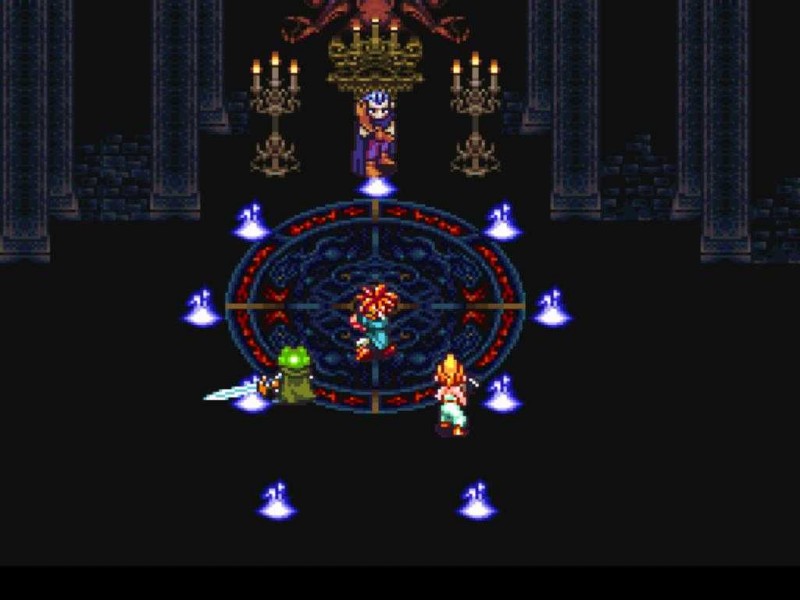
Chrono Trigger
What was it? Debuting on the Super Nintendo in 1995, Square Enix’s Chrono Trigger is widely considered to be one of the best Japanese RPGs of all time. Featuring fast-paced battles and a heartfelt tale of time travel that takes players from the far future into the prehistoric past, for many SNES-owning kids, this served as an introduction to how incredible RPGs could be.
How did it do? As mentioned above, the original Chrono Trigger is considered one of the best RPGs of all time, so you could say it did well. Critics praised the game’s polished simplicity and multiple endings and were willing to forgive (or even embrace) its short length relative to most other RPGs. It still tops many “Best Games of All Time” lists, including taking the #17 spot on our Top 200 Games of All Time from last year.
In 1996, Square released a mostly text-based Chrono Trigger “side story” titled Radical Dreamers. Though an official English translation of Radical Dreamers never happened, many of the characters and story elements from that game were moved over to 2000’s Chrono Cross, a PS1 sequel to Trigger. Though it maintained the multiple endings of Chrono Trigger, Cross replaced time travel with the concept of two parallel dimensions existing side by side.
Though Chrono Cross was heavily praised at the time of its release, fans tend to look back on it a little less lovingly than with Chrono Trigger. The gameplay was still tight and fast-paced, but Cross’s story became very complicated compared to the simple-but-effective plot of Chrono Trigger. Chrono Cross also featured a gigantic cast of 45 playable characters, which meant there was a lot of variety but also that many characters didn’t stand out. It’s still a good game, but it doesn’t hold up as a classic the way its predecessor does.
Where did it go? The original Chrono Trigger has seen re-releases on the PlayStation and Nintendo DS, but another game in the series remains unannounced. After the DS version, Square Enix senior vice president Shinji Hashimoto reportedly said, “If people want a sequel, they should buy more!” I can’t speak to sales, but the Chrono series sits atop many sequel wishlists, and it looks like it’s going to remain that way.

Dark Cloud
What was it? Dark Cloud won part of its popularity simply by being first. As one of the earliest RPGs released for the PlayStation 2, gamers eager for that style of gameplay turned to this first entry from new developer Level-5. The game focused on fast-paced action combat, randomly generated dungeons, and a “Georama mode” that allowed players to slowly build the towns they would be running around in.
How did it do? Despite the bland nature of the randomly generated dungeons and the general lack of plot, Dark Cloud was generally well received. The weapon-leveling and town-building aspects set it apart from other RPGs and made it worth pushing through other problems.
Dark Cloud 2 (released under the title Dark Chronicle in other territories) improved on the Dark Cloud formula in virtually every way. More varied environments, a larger and more interesting cast of characters, improved combat and graphics – it all added up to a significantly better experience that gamers loved all the more.
Where did it go? A third Dark Cloud game was rumored shortly after the sequel, but it never surfaced. Though Dark Cloud has been on hiatus since 2003, Level-5 carried over many of that series’ most memorable elements – including the Georama system – to their first current-gen console franchise, White Knight Chronicles. At this point, it’s probably more likely that they’ll continue building up that new series rather than looking back, though I’d welcome a return to the more light-hearted tone of Dark Cloud.
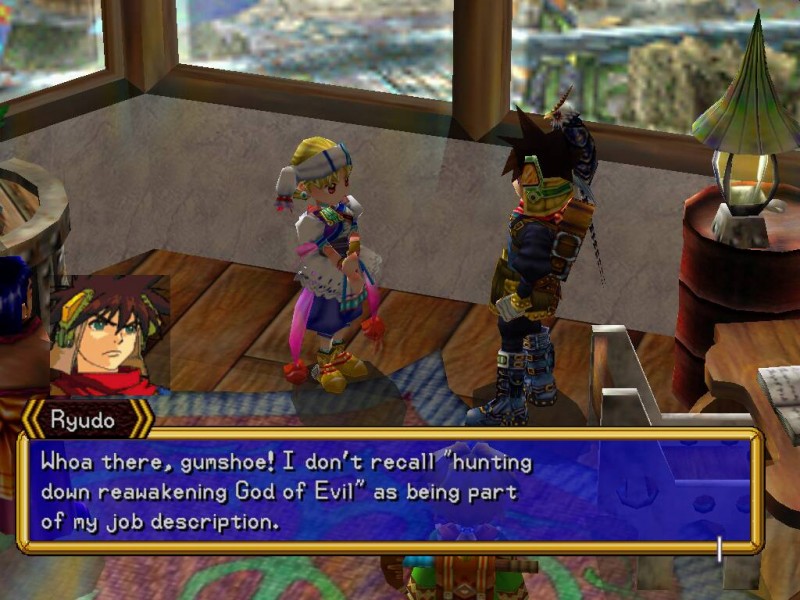
Grandia
What was it? Originally released on the Sega Saturn in Japan, Grandia made its way to the PlayStation and the U.S. in 1999. The series has been known for crafting grand fantasy adventures in the traditional RPG style. Looking back, it’s easy to call the storyline of the first game generic, but at the time it came out, those classic RPG elements weren’t as well-worn as they are now.
How did it do? Despite coming out after the arguably more technologically impressive Final Fantasy VII, Grandia was largely praised thanks to its speedy battles and great dungeon and environment design. One year after Grandia’s North American debut, Grandia II arrived for the Dreamcast and was once again well loved, though many noted that it wasn’t quite as interesting or fleshed-out as its predecessor. Unfortunately, when the sequel was ported to the PlayStation 2 and PC, it gained numerous technical problems, hurting its reputation.
In 2002, the same year as the PlayStation 2 port of Grandia II, developer Game Arts created a spin-off called Grandia Xtreme. The "Xtreme" apparently stood for getting rid of the focus on story and making the game all about grinding. Boring dungeon design and an imbalanced combat system pushed all but the most hardcore of RPG fans away from this entry in the series.
By the time Grandia III came out in 2006, people were ready for a return to form for the series. Despite a still somewhat disappointing story, particularly in the second half, fans praised the new game’s battle system.
Where did it go? Though hardcore fans have petitioned for a fourth mainline entry in the Grandia series for years, developer Game Arts has remained mostly quiet on the subject. Meanwhile, though, they have worked on taking the series into the MMO space with Grandia Online, a free-to-play MMO that’s currently only available for PC players in Japan. If Grandia Online takes off, it’s possible that they could revisit the series in proper console form in the future, but we may be in for a long wait.
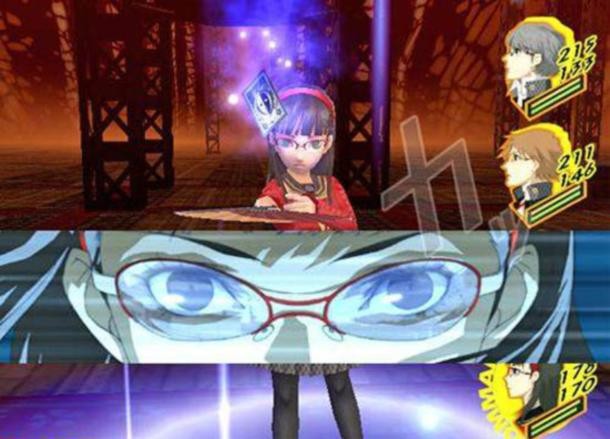
Persona
What was it? A spin-off of the hardcore Japanese RPG series Shin Megami Tensei, the Persona games are notable for their unique setting and plots, usually taking place in a modern Japanese high school. The games focus on demonic invasions of our world, often letting you talk to and recruit your enemies during battle. The name “Persona” comes from the plot conceit that characters can summon hidden elements of their personality to fight in a battle, a characteristic that often leads to psychological themes in the stories.
How did it do? Released in 1997 in North America as Revelations: Persona, the first game was praised for bringing something different to the RPG genre but was criticized for weak translation (a problem with many RPGs at the time). Though updated in some ways, last year’s PSP port of Persona probably received more criticism; the game was very difficult by current standards, although the translation was updated to be much better.
A sequel titled Persona 2: Innocent Sin came to Japan in 1999 but never made it to North America. Popular rumors hinted that Innocent Sin was originally planned to be brought over but was canceled because of controversial content. Strangely, though, the follow-up, Persona 2: Eternal Punishment, did come to America a year later. Unlike future games in the Persona series, Innocent Sin and Eternal Punishment were direct continuations of Revelations: Persona, including returning characters and plot elements. As with Persona, Eternal Punishment was praised for being unique but was still stuck with a subpar translation job.
The Persona series really came into its own with the PS2 entries: Persona 3 in 2006 and Persona 4 in 2008. Building beyond the dungeon-crawling formula from the first two games, Persona 3 introduced a system called “Social Links” that tasked you with building up relationships with various party members and NPCs. Critics and fans alike loved the new system, and by this point Atlus had much stronger localization, making it easier to appreciate the plot.
Less than a year later, an enhanced version titled Persona 3 FES was released, which included a new epilogue to wrap up the story. The FES content was not included in Persona 3 Portable, a PSP port released this year. Persona 4 was even more highly praised than the third game, adding in numerous themed dungeons and the ability to control characters in your party.
Where did it go? Unlike some of the other games on this list, the Persona series hasn’t disappeared entirely, but since Persona 4’s release late in the PS2 lifecycle, it has been relegated to PSP remakes of older titles. The team behind Persona is finally working on their first current-gen game, Catherine, and various people involved in the series have made comments about working on the "next" Persona game. Hopefully this means that a PS3/360 Persona 5 is in the works somewhere.
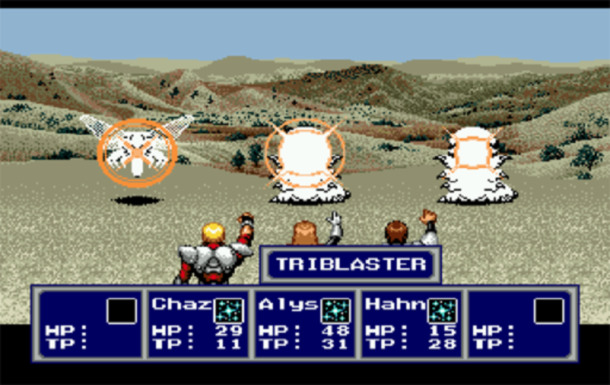
Phantasy Star
What was it? Many gamers are familiar with the Phantasy Star Online series, an MMO-lite that introduced lots of RPG fanatics to the concept of a co-op RPG on the Dreamcast, Xbox, and Gamecube. That’s not what I’m referring to here, though. The Phantasy Star series started out way back on the Sega Master Drive as a single-player, narrative-driven RPG that took the turn-based battles of early JRPGs like Dragon Quest and mixed them with a sci-fi setting.
How did it do? The original Phantasy Star came out in 1988 in the U.S. and featured an epic space-faring plot, multiple planets, and complex first-person dungeons that were easy to get lost in. The journey was aided by high-end graphics and animation. It was also notable as one of the first video games to feature a female lead character. A sequel, Phantasy Star II, came out two years later on the Genesis and was equally difficult yet compelling. The characters were more unique and interesting, and graphics were once again upgraded to make it one of the best-looking games of the time.
Phantasy Star III: Generations of Doom came out one year after the second game. As the subtitle suggests, this entry actually follows several generations of heroes. Unfortunately, the quick turn-around from its predecessor meant Phantasy Star III wasn’t as polished as the first two. Though the generational aspect was unique, many critics disliked how much it changed the series’ formula. It’s also notable that Rieko Kodama, often credited as the creator of the Phantasy Star series, did not work on Generations of Doom.
Luckily, Kodama returned for 1994’s Phantasy Star IV: The End of the Millennium, crafting what many consider to be one of the best JRPGs of all time. Taking place 1,000 years after Phantasy Star II, End of the Millennium ignored the third game’s events and focused on building a satisfying conclusion for the series. If you haven’t experienced the Phantasy Star games previously, all four are available on Virtual Console as well as via the Sonic’s Ultimate Genesis Collection compilation on Xbox 360 and PS3.
Where did it go? Since being revived in 2000, Phantasy Star titles have stuck entirely to online affairs, as in Phantasy Star Online and Phantasy Star Universe. Recently two new Phantasy Star titles were trademarked (subtitled Eternal Planets and Eternal Hutners, respectively), but it’s uncertain if these will be console games or portable titles. There definitely aren’t enough good sci-fi RPGs this generation, so resurrecting the single-player Phantasy Star experience could give Sega the opportunity to fill that niche.
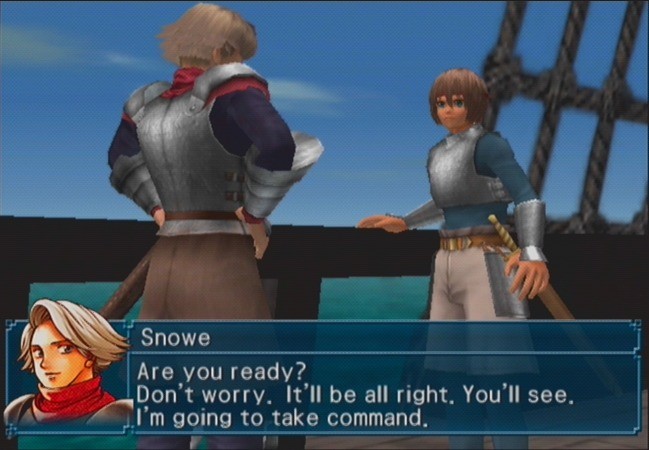
Suikoden
What was it? Suikoden is a Konami series of RPGs based very loosely on the Chinese novel Shui Hu Zhuan. Like that story’s 108 bandits, each game features 108 characters you can recruit. The series is known for plots that are more heavily steeped in political intrigue than most JRPGs. The main Suikoden games take place in the same world and feature some recurring characters, but generally each new entry takes place in a different time period or corner of the world.
How did it do? The original Suikoden came to North America on the PlayStation in 1996. Though generally praised, many critics noted that it was shorter and easier than other RPGs of the time, coming off more as something for beginners.
The sequel, on the other hand, arrived in 1999 in a very limited print run and with incredible word of mouth that has made it one of the most sought-after PlayStation games to this day. From graphics to the writing to the battle system, everything about Suikoden II was improved from the original. Most fans still consider it the best game in the series.
Suikoden III brought the series to the PlayStation 2 in 2002. Once again, the title was loved by fans, adding impressive next-gen graphics to the franchise’s formula of political struggle. It also featured the new “Trinity Sight System” which allowed players to watch the plot unfold from multiple points of view. A few negative reviews criticized the plot for being too slow –a complaint that would return for the series – but for the most part, people enjoyed Suikoden III.
With Suikoden IV in 2005, things started looking down for the series. Once again, the plot was criticized for its pace, and the game’s addition of sailing as a major mechanic slowed things down even more. The battle system also greatly limited the number of players you could use, which is a mistake in a series with as many playable characters as Suikoden. 2006’s Suikoden V reversed many of the problems with IV, but by that point sales for the series had dropped considerably.
In addition to the main games, there have been a few Suikoden spin-offs. Suikoden Tactics in 2005 tied into the story of Suikoden IV but featured a strategy RPG battle system. Suikoden Tierkreis arrived on the Nintendo DS in 2009, and though it provided an interesting tale, many fans were disappointed that it took place in a different world than the proper Suikoden games.
Where did it go? Good question. Despite the hype for Suikoden II and the popularity of Suikoden III, the series seems to have slowly disappeared. It’s possible that Tierkris is part of preparation for a return to the series, or maybe Konami has just decided that if it’s going to continue, it’s going to continue in portable form only. The publisher has been incredibly quiet, without even rumors of a Suikoden VI leaking out, which isn’t a good sign.
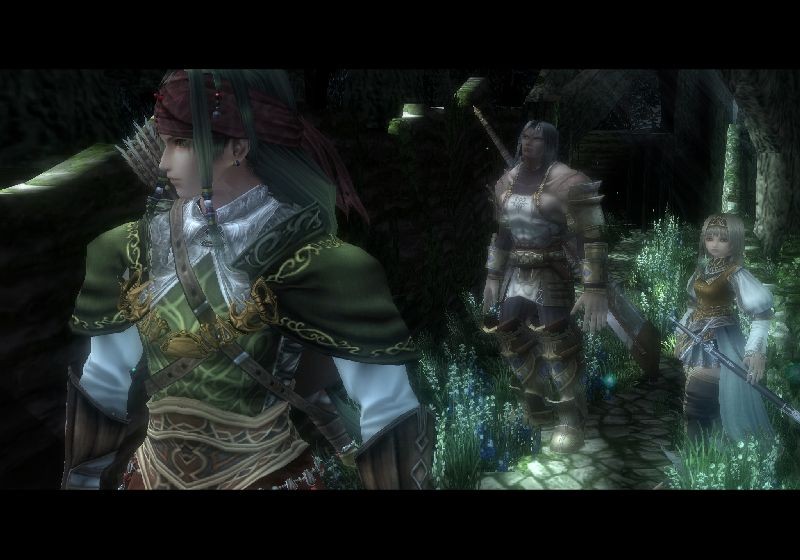
Valkyrie Profile
What was it? Though one of the lesser-known franchises on this list, Valkyrie Profile is also one of the most beloved by hardcore RPG fans. Developed by Tri-Ace – one of the few RPG-centric Japanese developers still making games on current-gen consoles today – the original game was based heavily on Norse mythology, a topic not completely driven into the ground by tons of other JRPGs.
How did it do? Though some players didn’t completely understand it, most critics praised Valkyrie Profile upon its release for the PlayStation in 2000. It featured a unique, well-developed story that also happened to be non-linear, a rarity with JRPGs. It also mixed traditional RPG gameplay with 2D platforming. This title was re-released as Valkyrie Profile: Lenneth on the PSP in 2006, which includes cleaned-up translation and new CG cutscenes.
A sequel, Valkyrie Profile 2: Silmeria, was developed for the PlayStation 2 and released in 2006. Once again, it was praised for its story and combat, although some critics found it to be too difficult. A DS spin-off, called Valkyrie Profile: Covenant of the Plume, was released in 2009 and took the series in more of a strategy RPG direction, garnering much less critical and fan approval.
Where did it go? Despite the critical buzz, the Valkyrie Profile series has never been hyped up as much as other RPG franchises. Various rumors have popped up about a third game in the series coming as a PS3 exclusive, but so far none of them have been true. Square-Enix and developer Tri-Ace still seem to have a good relationship, so it’s possible they’ll revisit Valkyrie Profile in the future.
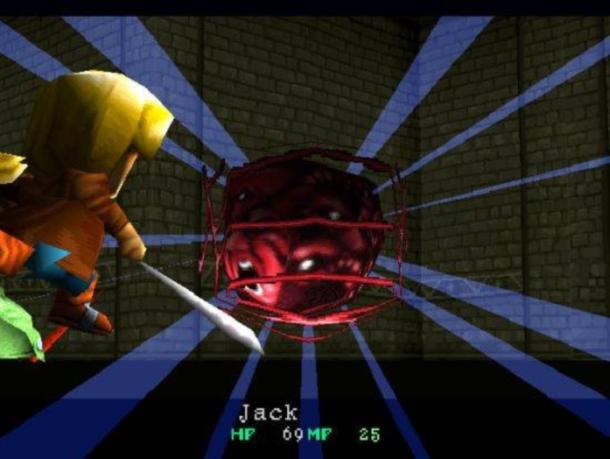
Wild Arms
What was it? This one is a personal favorite of mine. The original Wild Arms was the first RPG I bought for the PlayStation, and I loved the mix of classic RPG battles, Zelda-style puzzle-solving, and a vaguely Western setting, elements that came to define the long-running series.
How did it do? Despite coming out after Final Fantasy VII in 1997 and featuring graphics that weren’t a huge leap beyond what was possible on the SNES, Wild Arms received a positive response from critics and gamers. The puzzles were pointed out as something that might annoy gamers looking for a more traditional RPG, but they also made the game’s dungeons more than just a grind through enemies. Combat wasn’t particularly deep, but it was enough to keep gamers engaged.
Wild Arms 2 (2000) was a significantly weaker game than the original. The combat was slower, less interesting, and very easy. The battle scenes looked dated, and the story was a lot more complicated, but not in a way that made it any fun to follow. The series debuted on the PS2 with Wild Arms 3 in 2002. Though still not up to the quality of the original, the third game was an enjoyable Western adventure that felt different from most other RPGs out at the time.
In 2005, developer Media.Vision released a PS2 remake of the original Wild Arms titled Wild Arms Alter Code: F. The remake upgraded the graphics but maintained most of the same story elements, though new playable characters were added. Fans enjoyed the return to the original game’s plot, but Alter Code: F couldn’t really compete with more modern RPGs like Final Fantasy X.
The series took a turn for the dire with Wild Arms 4, which mostly robbed the series of its Western overtones, opting for a more generic fantasy setting. Even the dungeon sections suffered with the addition of sub-par platforming muddying up the previously strong puzzle-solving. Wild Arms 5 arrived in 2007, and though it wasn’t as hated as 4, it still suffered from an annoying main character and frustrating platforming sections. Still, it at least returned to the Western style and included cameos of characters from previous Wild Arms games to help celebrate the franchise’s 10-year anniversary.
Where did it go? Despite many rumors of Wild Arms 6 being announced at last year’s Tokyo Game Show, no info on the game has surfaced. A PSP spin-off of the series arrived in 2008, and Media.Vision has supposedly been hiring for a PS3 project. I’ll keep my fingers crossed, even if I’m the only one.
[some info for this feature via Hardcore Gaming 101 and Metacritic]

Get the Game Informer Print Edition!
Explore your favorite games in premium print format, delivered to your door.
- 10 issues per year
- Only $4.80 per issue
- Full digital magazine archive access
- Since 1991




